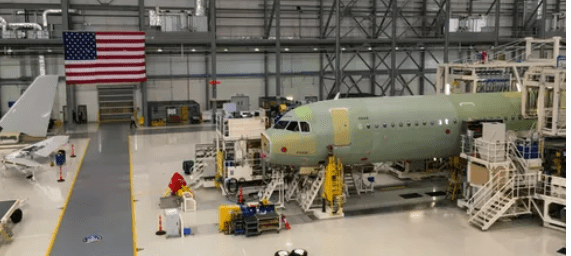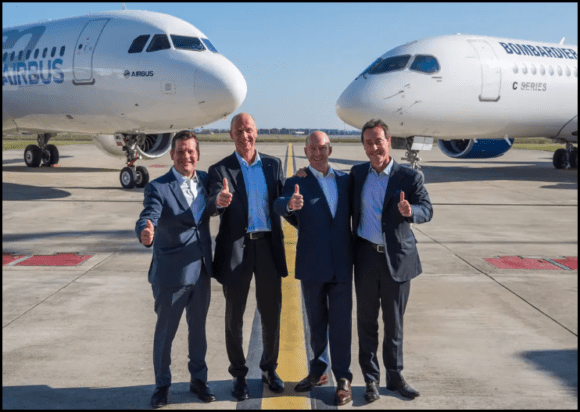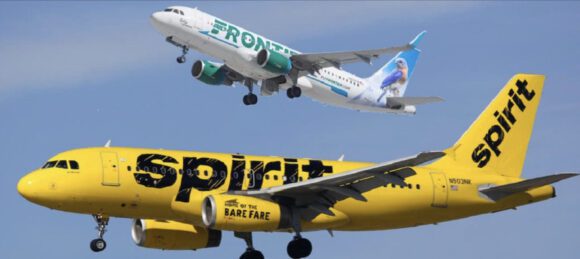
Airbus Mobile
Before the US Chamber of Commerce Global Aerospace Summit in Washington, DC, we got to spend a few minutes with Robin Hayes, Chairman & CEO of Airbus in North America.
AirInsight: I want to start with looking at the big picture. How do you see the North American market at this stage?
Hayes: You know, I think it continues to be strong, particularly internationally. You see, I still feel that airlines with international networks continue to report strong results and growth. I think that we have seen on the domestic side of the business some negative unit revenues over the last year or two. Still, I think what airlines are now saying is that they’re starting to see even the domestic unit revenues turn positive, and we’ve also seen some capacity reductions as we come into the second half of the year. We should continue to support that. So overall, you know, I think it continues to be a pretty strong market, because…
AirInsight: There was a lot of discussion about the Trump tariffs, and they would supposedly bring traffic down to the US. But from what I can see in the data, that hasn’t happened, except for Canada.
Hayes: Yeah, I think I would agree with that. I also believe that there continues to be robust international travel demand. And, you know, I think we’re going to continue to see that. And also, more particularly in Europe, with airplanes like the XLR, new markets coming online, being served direct from the US, that perhaps weren’t direct before.
AirInsight: The big news, obviously, the Spirit Airlines Chapter 11 filing, they’re a big customer of yours. But the thing is, speaking with you is really interesting from this aspect, you’ve got an excellent view of the airline industry from the inside and now from the outside. How do you view the ULCC market in the US?
Hayes: So, if I go back 10 years, I would say the US market was much more rigidly divided, defined by business travel, business airlines, and leisure airlines. And I think what you’ve seen in the last decade is a convergence of that. So, you’ve seen global network airlines roll out products like Basic Economy and segment the market. You’ve also seen low-cost carriers, including ultra-low-cost carriers, build more premium offerings. So JetBlue, with the Mint product 10 years ago, and Spirit are doing so. I think you’ve noticed a blurring of the lines, which has made it harder to segment by airline type. Instead, it’s become more about segmenting by different customer types and how airlines serve them.
AirInsight: Another regular item among industry watches, obviously, is the supply chain. What’s your assessment? Are things getting easier yet?
Hayes: Yes, I would say that what we’ve seen over the last couple of years is that the supply chain issues have become more specific. So, for example, you know, there’s been a lot of focus on engine deliveries. At the end of our first half, we had about 60 airplanes without engines attached. We’ve also encountered challenges with BFE, specifically the buyer-furnished cabin equipment. I think this is because, as a competitive edge, airlines are continuing to customize more, which creates challenges in delivering and certifying the products. I would say those are, whereas a couple of years ago, the supply chain constraints were perhaps broader. I would say now we’re seeing much more in those two specific areas,
AirInsight: People we talk to seem to focus on labor, particularly the biggest pain point right now: getting the right skilled people to work the machinery. Young people do not seem to want to enter the aerospace industry as in previous generations. Any thoughts on that?
Hayes: Yeah, so, you know, first of all, I think we saw a lot of institutional knowledge lost with Covid. You know, I believe the aviation and aerospace industry was hit particularly hard, and so a lot of companies offered early retirement packages and similar incentives. So that experience went, and then you have to replace it. So, one, there are just the sheer numbers that you need. And then two, how do people think about aerospace as a career choice? And I think that’s where, as an industry, we have to do a much better job to sell the benefits of aerospace. We also consider the numerous conversations surrounding the jobs that AI will disrupt. Yes, AI will have an impact on our business. But fundamentally, that sort of design, the production, the manufacturing, the servicing, the flying of commercial aircraft is still going to be very people-led, and so what we’re doing at Airbus is, you know, we are working with several colleges and several states to put those Workforce Development Program programs in place. So in Mobile, for example, we have a significant effort in terms of apprenticeships and hiring, hiring people, and teaching them our industry.
AirInsight: What is Airbus America’s biggest challenge right now?
Hayes: That’s a great question. I would say that making sure people understand Airbus’ commitment to the US manufacturing base is key. We will be opening the next line in Mobile next month, which will make Mobile the fourth-largest final assembly line in the world.
AirInsight: How many years has that factory been going?
Hayes: That’s a great point. So, you know, if you think about the other three FALs, one can debate when they produced their first airplane, but they’ve been at it for at least 60 to 70 years, if not longer. Mobile has accomplished that in 10 years. So it’s a remarkable story, an outstanding achievement. So, it’s not just that; it’s the helicopters we build in Mississippi, the space business in Florida, and the hundreds of engineers we employ in Wichita and Mobile. And so I think it’s crucial to continue setting this goal, especially right now, with an administration that prioritizes building a manufacturing base. Everyone must understand Airbus’s absolute commitment to this goal. And we’re going to continue to grow our manufacturing footprint here. And of course, we will also be inheriting the A350 fuselage large manufacturing facility in North Carolina, which will become part of our Airbus footprint.
AirInsight: Finally, what do you expect of the North American commercial aviation industry over the next five years?
Hayes: I think we’re going to continue to see strength. I believe that travel demand continues to track GDP growth, and as GDP grows, we can expect travel to grow as well. I think you’ll see airlines continue to innovate with more segmentation, increased cabin connectivity, and new technologies like the A350 and the A321, which will enable more markets to come online.
AirInsight: Thank you very much.
Views: 242




